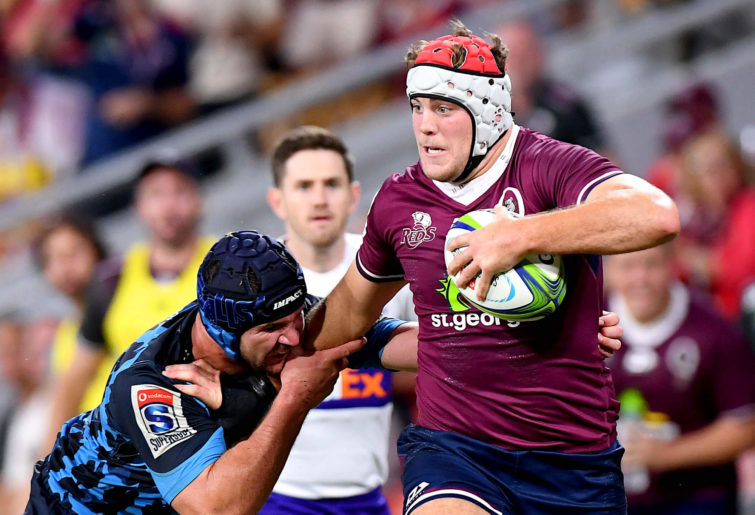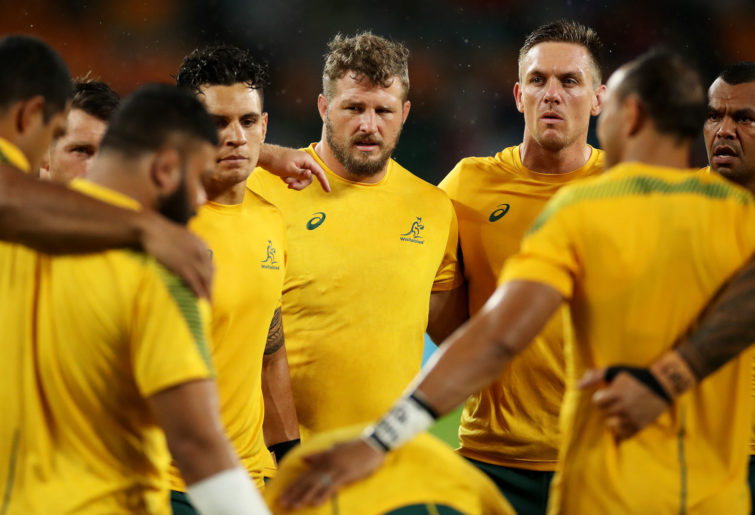A week after the Brumbies-Reds Super Rugby AU fans of both rugby codes got the chance to watch NRL powerhouses South Sydney Rabbitohs and Sydney Roosters in what should have been a titanic Round 20 match-up.
Falling on the union side of the rugby divide, I will admit that, bar some knowledge here and there, I am not aware of the true intricacies of league – who the greatest players are or who the bright hopes for the future are et cetera. However, watching the Rabbitohs dismantle the Roosters, who are still hoping for a premiership three-peat, I found myself distracted back towards the thing I was seeking distraction from, namely my paid job!
The play was fairly turgid, with opposing players appearing to prefer running directly at the nearest man rather than using any footwork to gain extra yards, and support runners did not seem as frequent and imaginative as some diehard league fans would have you believe occurs on the regular, with the true skill coming from the ball player ‘always’ selecting the right option.
The Rabbitohs defensive line was fast and solid, as demonstrated by their concession of only two tries, but the Roosters defence looked as fearsome as the Wallabies in recent years, and we know the bashing that has taken in both the press and stadiums.
All while this decidedly one-sided affair was taking place the commentary continually reminded us of the great spectacle we were watching. Every hit, big or otherwise, was met with, “Great shot by X,” or, “He’s showing his physicality here tonight on Fox League“.
Each bit of off-the-cuff skills had the theme tune of, “Special skills on display here on Fox League,” or, “That’s what he brings every time he steps onto the field” et cetera.
All of this despite the pictures showing some good but not great hits and skills you would expect from professional footy players.
The commentary and overall production of the show was all geared towards the positive aspects of the game as a whole regardless of what was actually happening, the idea being that if you were sat in the pub or even had the footy on in the background while doing something else and heard that commentary, you would start paying attention and start buying into the teams or players.
Compare this to media coverage of rugby union in Australia. The commentary often resembles three blokes discussing in-jokes that aren’t actually that funny or comparing how the current state of the game is nowhere near the level it used to be. Coincidentally, the ‘higher level’ also happens to be when they played.

(Photo by Bradley Kanaris/Getty Images)
The skill level on show by some players in Super Rugby may not be of the standards of George Gregan, Stephen Larkham et al, but neither were the skills of a number of their colleagues. And the constant bashing by the commentary team of anybody who doesn’t display those highest-level skills does the game a disservice.
I’ll happily accept that union commentary is very complimentary of Wallabies players when they don their Super Rugby shirts. Taniela Tupou, Michael Hooper, Matt To’omua et cetera all get big props when they show their abilities, but telling us that so and so was a bin man or a chippy 12 months ago and has done well to be playing in this team doesn’t help things. These are good news stories but in commentary make it sound like these players are lucky to be there or that the standard is so low that anybody could walk into a starting shirt.
Going back to the idea of watching rugby in the pub or having it on in the background, when listening to Super Rugby AU commentary you would be less likely to turn around and start watching the game given half the time the commentators don’t seem to be interested or the teams seemed to be filled with chippies, labourers, bin men and private schoolboys who have all decided to come together and show how far the game has fallen.
But the game hasn’t fallen. It has stood still.
While teams across the world have sought to progress and develop their reach and skill levels, the Wallabies have rested on their laurels and taken second-hand advice from league about what elite sports teams do and should expect. The public spats and disagreements about how rugby union isn’t what it used to be and that Rugby Australia would be lucky to get a new broadcast partner simply treads the same path that the sport has gone down in the past ten years, driving down its value and interest both in the business world and the homes of the Australian public.
How the NRL has grown and sustained its growth in years gone by is extraordinary given not many people globally know what rugby league is, but the sport’s level of production and self-promotion compares with that of the major US leagues. Ahead of the new NRL season there was an advert that essentially promoted the game’s physicality, albeit completely ignoring its questionable stance on high shots and concussions.
What is little Johnny going to be interested in? Big hits, players diving in to score tries, and passes round the back and through the legs? Or that this player was a bin man and he now gets to play with these guys who all went to private schools in Brisbane or Sydney?
One of the problems union faces in Australia, a country with a population expected to top 30 million by 2030, is that it is too comfortable being a game ‘for the boys’. It needs to stop having its perennial in-jokes and start to truly reach out through televisions, computers and phones, grab the population by the shoulders and hold them there until they buy into the sport.
Simply looking at YouTube should give the marketing teams some ideas. The most popular rugby videos of either code are those involving big hits and hot steppers. Give us some of those. Let players show their characters off. Don’t chastise someone because he doesn’t always stick to the script or isn’t afraid of standing up for himself.
Revitalise the on-screen talent. So many people care about this game and can provide just as much insight into what is going on as those currently in the chairs. Mix it up. Get some younger blood in there.

(Cameron Spencer/Getty Images)
Look at what is happening over in the UK with football and rugby union coverage – people who have been involved in the game more recently are getting more opportunities in the media. Their ability to connect with the players but still ask difficult questions helps engage younger audiences, who recognise the people involved. That’s not to say players from yesteryear don’t have merit or aren’t included – they do and they are, but rather than asking them to be the jack-the-lad type, they’re able to provide a wiser viewpoint.
What about getting a former referee involved? Or someone from the women’s game? A sevens coach may be able to provide different insight into the skills on show.
Whoever secures the rights to show rugby union in Australia next need to have some stipulations in their contract regarding their promotion of the sport, including adverts, scheduling, weekly shows and just an overall positive outlook.
Nobody wins if the value of union is driven down by the very people put in place to help give it life. Strong leadership is needed. Let’s hope it’s found off the field as it appears to have been found on it.
from The Roar https://www.theroar.com.au/2020/09/29/the-difference-between-super-rugby-and-nrl-its-all-in-the-marketing/


0 Comments